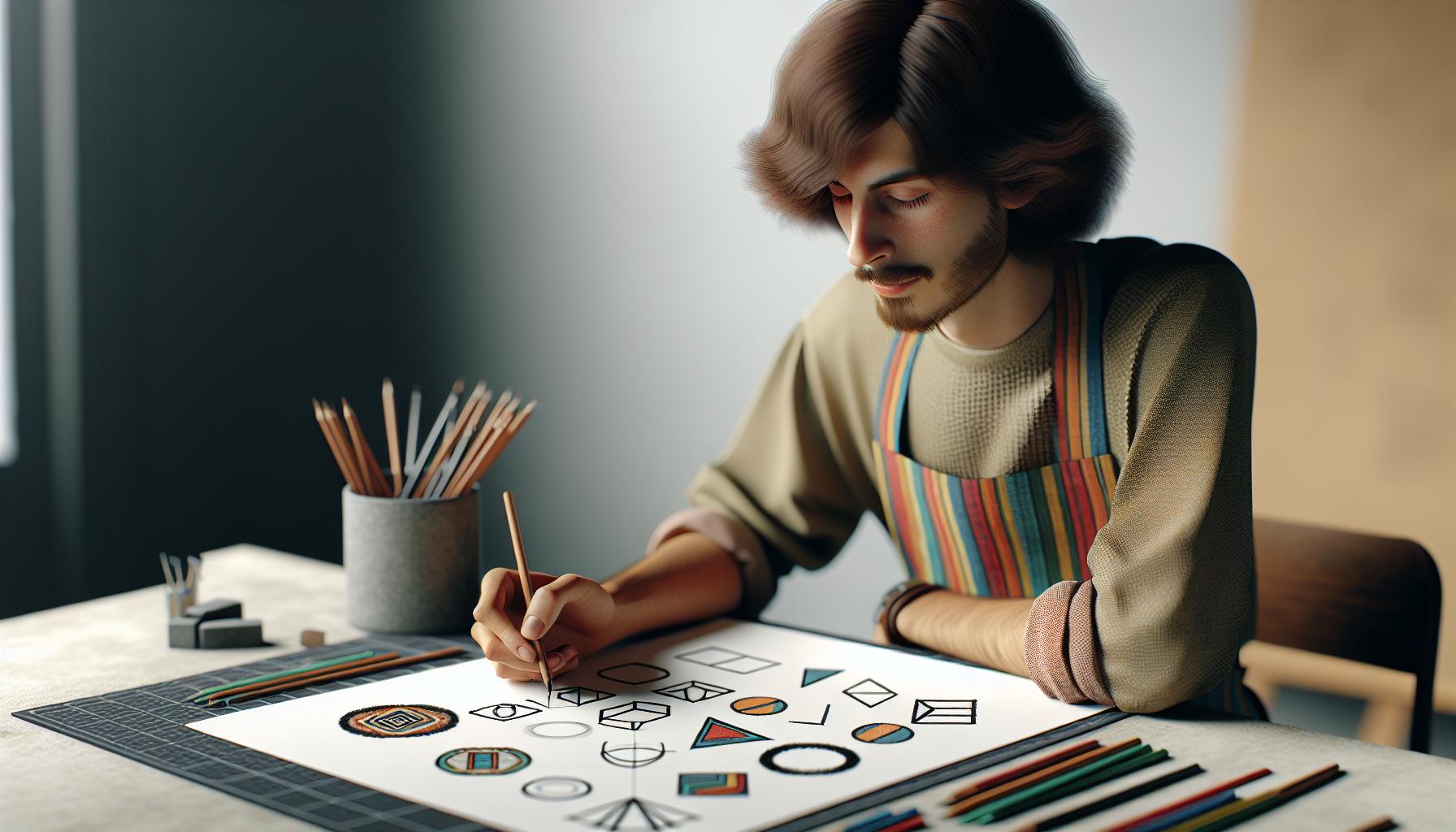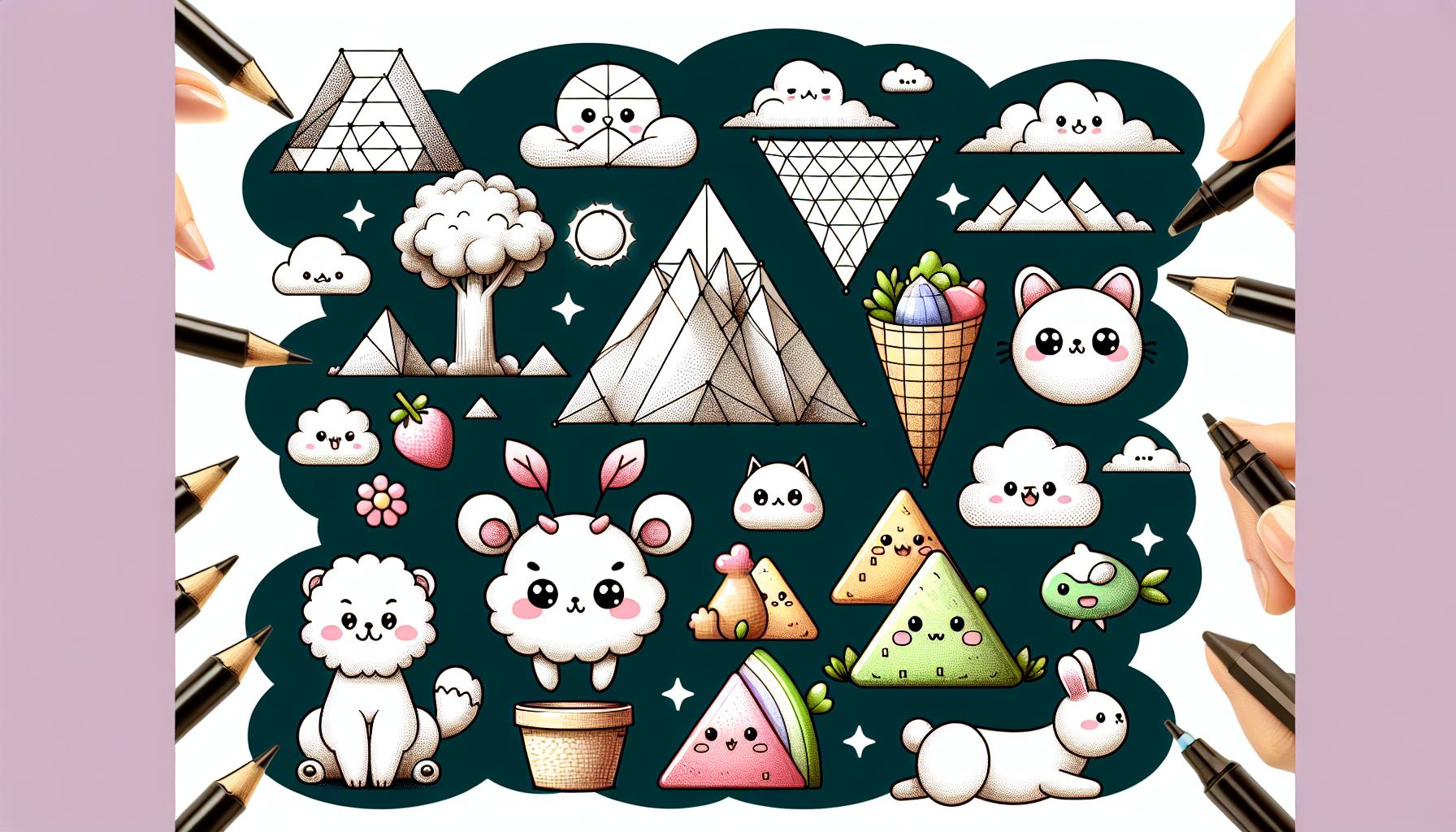I’ve always been fascinated by how simple drawings can bring joy and creativity to our lives. Whether you’re a beginner or someone who just loves to doodle bonitos dibujos (pretty drawings) you’ll find that creating beautiful artwork doesn’t have to be complicated.
In my experience teaching art to beginners I’ve discovered that starting with easy drawings builds confidence and develops essential skills. These dibujos faciles (easy drawings) are perfect for anyone looking to express their artistic side without feeling overwhelmed. I’ll share some of my favorite techniques that have helped countless students transform basic shapes into charming artwork they can be proud of.
Key Takeaways
- Simple drawings (dibujos faciles) rely on basic shapes like circles, squares, and triangles to create approachable artwork that can be completed in 3-5 minutes
- Essential supplies for easy drawing include 2B/HB pencils, fine-point markers (0.3-0.5mm), white erasers, and appropriate paper types like bristol board or sketch paper
- Five core elements of easy drawings include using basic geometric shapes, continuous fluid lines, symmetrical proportions, minimal details, and sequential steps
- Popular drawing subjects for beginners include nature elements (trees, mountains), cartoon animals, kawaii-style characters, and simple everyday objects
- Regular practice through daily sketching, timed exercises, and mastering basic shape combinations is crucial for improving drawing skills
- Common mistakes to avoid include pressing too hard with pencils, focusing on details too early, and skipping fundamental practice techniques
Bonito:iddkrj009em= Dibujos Faciles
Easy drawings (dibujos faciles) represent simplified artistic expressions created using basic shapes, minimal lines and elementary techniques. These fundamental sketches transform complex subjects into approachable drawings through geometric forms like circles, squares, triangles and lines.
Key characteristics of easy drawings include:
- Single-line illustrations with minimal details
- Step-by-step construction using basic shapes
- Limited shading or texture elements
- Focus on recognizable outlines
- 3-5 minute completion time per drawing
Popular easy drawing subjects I teach include:
- Cartoon animals (cats, dogs, birds)
- Simple landscapes (mountains, trees, houses)
- Basic objects (flowers, hearts, stars)
- Kawaii-style characters
- Doodle art patterns
| Skill Level | Time Investment | Number of Steps |
|---|---|---|
| Beginner | 3-5 minutes | 4-6 steps |
| Intermediate | 5-10 minutes | 6-8 steps |
| Advanced | 10-15 minutes | 8-12 steps |
I’ve identified five core elements that make drawings easy to create:
- Starting with basic geometric shapes
- Using continuous fluid lines
- Maintaining symmetrical proportions
- Adding minimal details
- Following sequential steps
The “dibujos faciles” approach breaks down complex artwork into manageable components, making artistic expression accessible to artists at any skill level. These drawings serve as building blocks for developing more advanced techniques while providing immediate creative satisfaction.
Basic Supplies Needed for Simple Drawing
Creating simple drawings requires a minimal set of essential tools and materials. I’ve identified the core supplies that deliver optimal results while keeping the process straightforward and enjoyable.
Essential Drawing Tools
I recommend starting with these fundamental drawing tools:
- 2B graphite pencils for initial sketching
- HB pencils for refined lines
- Fine-point black markers (0.3mm 0.5mm) for outlining
- White polymer erasers for clean corrections
- Pencil sharpener with dual holes
- Drawing compass for perfect circles
- 12-inch ruler for straight lines
- Blending stumps for smooth shading
| Tool Type | Recommended Size/Specification | Primary Use |
|---|---|---|
| Graphite Pencils | 2B HB | Sketching Base Lines |
| Fine Markers | 0.3-0.5mm | Final Outlines |
| Eraser | White Polymer | Clean Corrections |
| Ruler | 12-inch | Straight Lines |
- Smooth bristol board (9×12 inches) for marker work
- Standard sketch paper (70lb weight) for practice
- Mixed media paper for versatile techniques
- Marker paper (50 sheets) for clean line work
- Drawing pads with micro-perforated sheets
- Toned gray paper for highlight effects
| Paper Type | Weight | Best For |
|---|---|---|
| Bristol | 100lb | Clean Lines |
| Sketch | 70lb | Practice Work |
| Mixed Media | 98lb | Multiple Techniques |
| Marker | 50lb | Smooth Finishes |
Step-by-Step Drawing Techniques for Beginners

Drawing simple artwork starts with mastering fundamental techniques that build confidence and skill. My experience teaching art has shown that breaking down complex subjects into basic components leads to consistent success.
Basic Shapes and Forms
I start every drawing lesson by focusing on five foundational shapes that form the basis of most simple drawings:
- Circles for creating heads faces animals
- Squares for buildings boxes containers
- Triangles for mountains roofs simple designs
- Ovals for eyes bodies limbs
- Rectangles for structures buildings frameworks
These shapes combine in specific ways to create recognizable objects:
- Position the largest shape as the main body
- Add medium shapes for primary features
- Place smaller shapes for details expressions
- Connect shapes using smooth curves
- Refine edges angles proportions
Simple Line Drawing Methods
Single-line drawing techniques create clear recognizable artwork:
- Start with light pressure pencil strokes
- Draw continuous lines without lifting the pencil
- Use flowing curved movements
- Create variations in line thickness
- Add simple hatching for basic shadows
- Contour drawing: Outline objects with unbroken lines
- Gesture drawing: Capture movement with quick strokes
- Blind contour: Draw without looking at the paper
- Cross contour: Add depth with parallel lines
- Dot-to-dot: Connect reference points systematically
| Line Type | Purpose | Time to Master |
|---|---|---|
| Contour | Object outlines | 2-3 days |
| Gesture | Movement capture | 1-2 weeks |
| Cross contour | Depth creation | 3-4 days |
| Directional | Texture definition | 1 week |
| Weighted | Emphasis points | 2-3 days |
Popular Easy Drawing Ideas

Drawing inspiration comes from everyday objects & scenes that surround us. I’ve curated these popular drawing ideas based on my experience teaching beginners & their success rates with specific subjects.
Nature and Animal Sketches
Simple nature elements create engaging artwork through basic shapes & lines. Trees start with triangle shapes for evergreens or circle shapes for deciduous varieties. Animals transform from circles & ovals: rabbits (3 circles for body head & tail), cats (oval body circle head), birds (oval body teardrop head). Common landscape elements include:
- Mountains using triangles with gentle slopes
- Clouds from connected circle shapes
- Flowers with circle centers & oval petals
- Fish from curved tear-drop shapes
- Butterflies using symmetrical wing patterns
Cute Cartoon Characters
Kawaii-style characters emerge from simple geometric shapes & expressive features. The key elements include:
- Large circular heads (1/2 to 2/3 of total height)
- Minimal facial features (dots for eyes U-shape for mouth)
- Small rounded body shapes
- Simplified limbs using straight lines or gentle curves
- Decorative elements (bows hearts stars)
- Food items with faces (cupcakes sushi pizza)
- Baby animals (pandas kittens puppies)
- Fantasy creatures (unicorns dragons mermaids)
- Everyday objects (pencils books phones)
| Character Type | Basic Shapes Used | Completion Time |
|---|---|---|
| Food Items | 2-3 circles | 3-4 minutes |
| Baby Animals | 3-4 ovals | 4-5 minutes |
| Fantasy Creatures | 4-5 shapes | 5-6 minutes |
| Object Characters | 2-3 shapes | 2-3 minutes |
Tips for Improving Your Drawing Skills
Drawing skills advance through consistent practice combined with proper technique application. I’ve developed specific strategies that transform beginner artists into confident creators.
Practice Exercises
- Create 10 perfect circles in 2 minutes
- Draw circles clockwise starting from the top
- Compare sizes for consistency training
- Focus on smooth, continuous motions
- Complete 5-minute gesture drawings
- Use quick strokes to capture basic forms
- Set a timer for urgency
- Draw the same subject from multiple angles
- Fill one sketchbook page daily
- Dedicate 15 minutes each morning
- Alternate between subjects
- Date entries to track progress
- Master basic shape combinations
- Combine 3 shapes to create objects
- Practice 20 variations of each combination
- Time each drawing (30-second limit)
- Pressing too hard
- Creates permanent indentations
- Makes erasing difficult
- Reduces line fluidity
- Focusing on details too early
- Neglects basic proportions
- Creates unbalanced compositions
- Extends completion time
- Incorrect grip positioning
- Limits line control
- Causes hand fatigue
- Restricts natural movement
- Drawing without references
- Produces inaccurate proportions
- Limits understanding of form
- Slows skill development
- Skipping fundamental practice
- Hampers technique development
- Creates bad habits
- Limits artistic growth
Arististic Abilities
Drawing doesn’t have to be complicated to be beautiful and meaningful. Through my years of teaching I’ve seen countless students transform their artistic abilities using these simple techniques and approaches. The joy of creating easy drawings lies in their accessibility and the confidence they build.
I encourage you to grab your pencil and start with basic shapes today. Remember that every artist began somewhere and these fundamental techniques are your gateway to endless creative possibilities. With the right tools practice and patience you’ll discover that creating beautiful artwork is within your reach.
Let these easy drawing methods be your first step toward artistic expression. I’m confident you’ll find the same joy and satisfaction that I’ve witnessed in my students when they master these simple yet powerful techniques.

